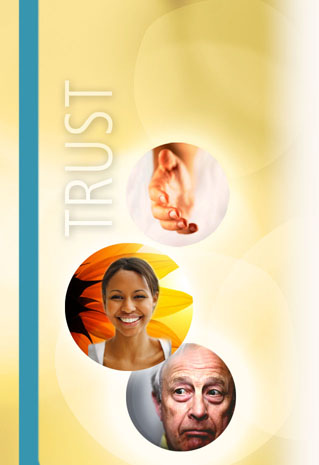
Trust Oriented Therapy
(TOT)
The core belief of TOT is that every person has the inner resources
they require to meet the needs of their life without doing harm to themselves and others. At points in their life, many human beings have difficulty accessing their inner resources when facing the challenges
inherent in human existence. These are times when some individuals come to counselling or therapy for assistance. They are looking for more effective ways to meet both their inner and outer needs in the world. This usually involves working through their inner confusion, conflict and emotional pain and learning how to engage with others in ways that are more fulfilling and harmonious.
The intention of the TOT approach is to create a climate of safety and welcoming where the client can feel free to explore and express all aspects of their full sense of self: their thoughts, feelings, longings and behaviors (with the exception of actions that would create physical harm or damage). Symptoms and presenting concerns are not seen as aspects of a disease that needs to be dampened or eliminated as quickly as possible. They are viewed as incomplete or symbolic expressions of human needs. Something important is trying to emerge and release or express itself and the therapist's role is to provide a container for the emergence to take place.
The intention of the therapist is to join the inner world of the client and to accept them in their present, here-and-now experiencing. The task of the TOT therapist is to discover how to support the uniqueness of each client in ways that are in accord with the personality, values and behaviors of the client. Some clients will be able to meet their therapeutic needs primarily through cognitive means. Others will need a combination of cognitive and somatic felt-sense experience to find their way through their difficulties. Others will need to access a more spiritual or soulful realm of experience. Through a collaborative experiential process, the client and therapist discover the way that is most congruent with the needs of the client. Most of the time, this collaborative process involves the therapist's willingness and ability to follow the natural unfolding process of the client. The therapist trusts that the client, at their core, is the expert in knowing what they need and how that knowing will unfold. The therapist, using the TOT approach, assists the client to access their own inner direction and supports them to trust in and follow the experience that arises as they walk on their own path. As clients engage in this process they move from what they know consciously to what they know unconsciously that they need to know in order to heal and grow.
Out of the collaborative climate created by the therapist and client, the therapist will, at times have ideas, intuitions and perspectives that may be helpful to the client. When presenting these offerings to the client the TOT therapist takes care to support the autonomy of the client and let the client be the one who decides what offerings of the therapist have value or meaning for them.
The healer is only the servant of nature, not her master
- Paracelsus

The Crack Is Where the Light Gets In
The symptom is often
the doorway to healing and growth.
You may need help
in valuing, acknowledging and engaging
with problematic behaviors and disturbing feelings.
You may need support
to approach the stubborn locked door
that holds back
both the pain and the healing energy
within your being.
Listen to the good news!
There is a pathway
through the granite rock face
to the liquid gold
at your core.
All it asks of you
is your willingness
to bring your patient and trusting awareness
to those immediate inner beacons
that you are reluctant to see.
Written by Mahmud Nestman



